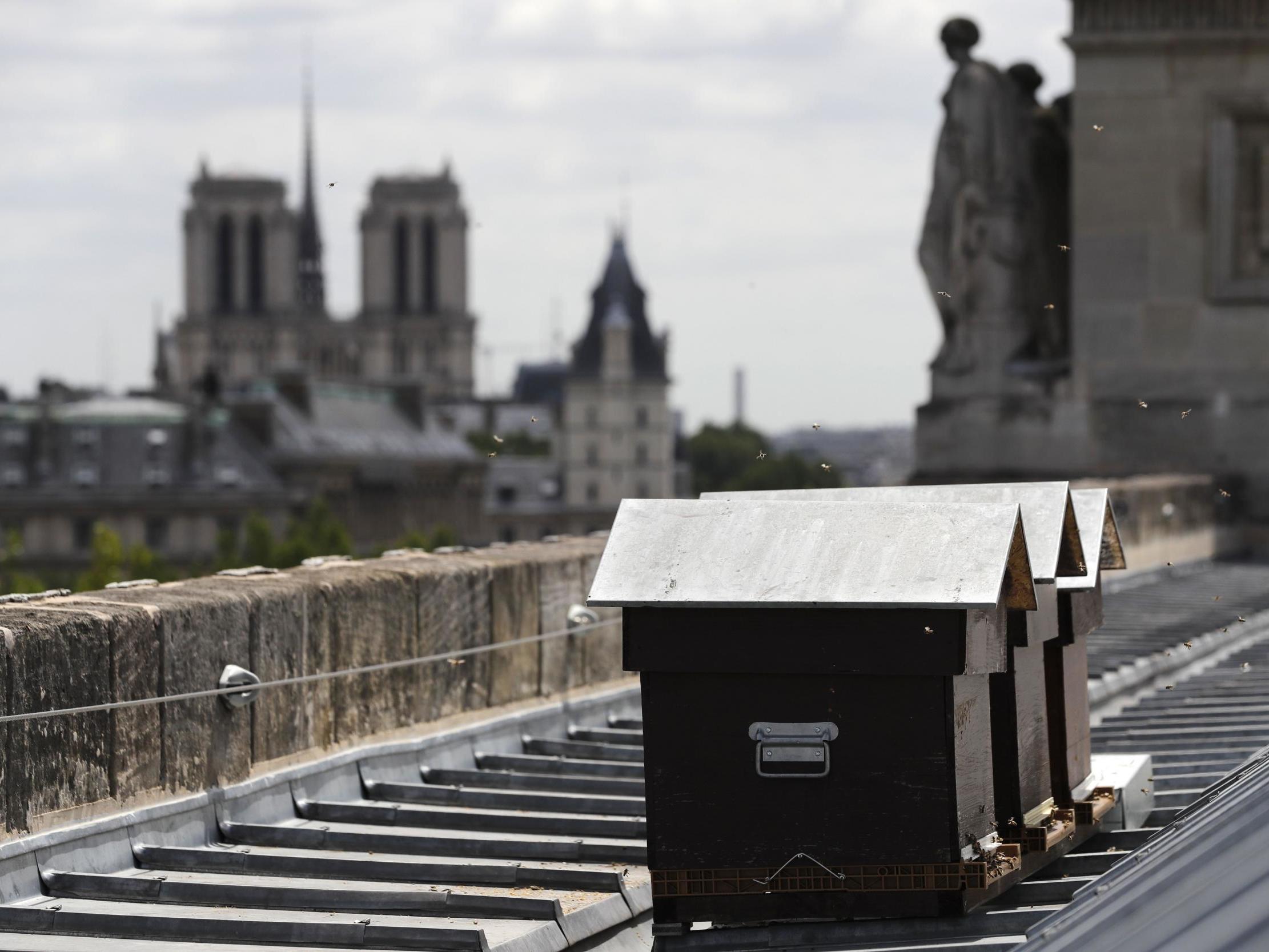Bees survive Notre Dame fire after getting ‘drunk on smoke’
Thousands of insects on cathedral's roof emerged unscathed from inferno, confounding beekeepers who feared they had perished

Your support helps us to tell the story
From reproductive rights to climate change to Big Tech, The Independent is on the ground when the story is developing. Whether it's investigating the financials of Elon Musk's pro-Trump PAC or producing our latest documentary, 'The A Word', which shines a light on the American women fighting for reproductive rights, we know how important it is to parse out the facts from the messaging.
At such a critical moment in US history, we need reporters on the ground. Your donation allows us to keep sending journalists to speak to both sides of the story.
The Independent is trusted by Americans across the entire political spectrum. And unlike many other quality news outlets, we choose not to lock Americans out of our reporting and analysis with paywalls. We believe quality journalism should be available to everyone, paid for by those who can afford it.
Your support makes all the difference.Hundreds of thousands of bees that live in Notre Dame’s roof survived the raging fire – to the relief of beekeepers who presumed them dead.
Hunkered down in their hives, protecting the queen, the roughly 180,000 bees emerged unscathed from the inferno that tore through the Paris landmark this week.
“It’s a big day,” said Notre Dame beekeeper Nicolas Geant on Friday. “I am so relieved. I saw satellite photos that showed the three hives didn’t burn.
“Instead of killing them, the CO2 [from smoke] makes them drunk, puts them to sleep,” he said.
Mr Geant has overseen the insects since 2013, when the hives were installed on the wooden roof the stone sacristy at the south of the cathedral.
Notre Dame’s smallest residents moved in as part of a Paris-wide initiative to boost declining bee numbers. Hives were also introduced above Paris’s gilded Opera Bastille.
The cathedral’s hives were lower than Notre Dame’s main roof and the 19th-century spire that burned and collapsed during Monday evening’s fire.
Bees do not have lungs so they cannot die from smoke inhalation – but they can succumb to excessive heat. European bees, unlike some other bee species, do not abandon their hives when facing danger.
“When bees sense fire, they gorge themselves on honey and stay to protect their queen, who doesn’t move,” Mr Geant said. “I saw how big the flames were, so I immediately thought it was going to kill the bees. Even though they were 30m lower than the top roof, the wax in the hives melts at 63C.”
If the wax that protects their hive melts, the bees inside simply die, Mr Geant explained.
Smoke, on the other hand, is innocuous. Beekeepers regularly smoke out the hives to sedate the colony whenever they need access inside. The hives produce around 75kg of honey annually, which is sold to Notre Dame employees.
Notre Dame staff spotted the bees on top of the sacristy on Friday, buzzing in and out of their hives.
“I wouldn’t call it a miracle, but I’m very, very happy,” Mr Geant.
Subscribe to Independent Premium to bookmark this article
Want to bookmark your favourite articles and stories to read or reference later? Start your Independent Premium subscription today.
Join our commenting forum
Join thought-provoking conversations, follow other Independent readers and see their replies
Comments